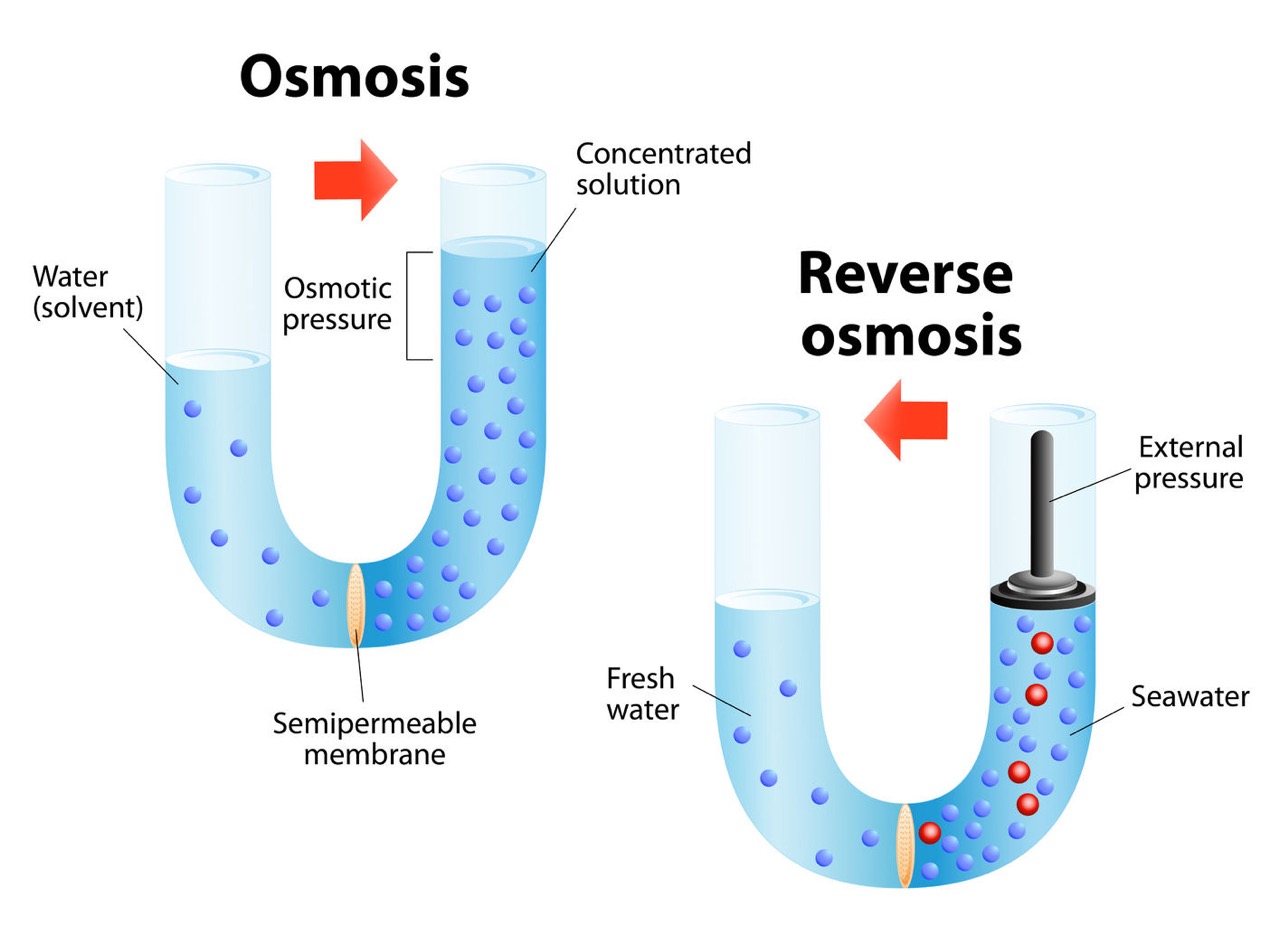Water is an essential resource for life, but it is not always safe to drink. Many pollutants can contaminate our water sources, including chemicals, bacteria, and viruses. That’s why water filtration is important. Reverse osmosis (RO) is one of the most effective methods of water filtration, and it offers many benefits for both home and industrial use. In this article, we’ll explore the benefits of reverse osmosis water filtration and how it works.
What is Reverse Osmosis?
Reverse osmosis is a water filtration process that removes contaminants from water by forcing it through a semipermeable membrane. The membrane allows water molecules to pass through, but it blocks larger molecules, such as dissolved salts, minerals, and impurities. The result is clean, pure water that is safe to drink.
Reverse osmosis is a popular method of water filtration because it is effective at removing a wide range of contaminants. Some of the pollutants that reverse osmosis can remove include bacteria, viruses, pesticides, nitrates, and heavy metals.
Benefits of Reverse Osmosis Water Filtration Removes Harmful Contaminants
The primary benefit of reverse osmosis water filtration is that it removes harmful contaminants from water. This is important for both home and industrial use. For example, in homes, reverse osmosis systems can remove contaminants such as lead, chlorine, and fluoride, which can cause health problems over time. In industries, reverse osmosis systems can remove contaminants such as bacteria, viruses, and chemicals, which can cause product defects or pose a risk to human health.
Improves Taste and Odor
Systems can also improve the taste and odor of water. Because reverse osmosis removes impurities, the resulting water has a clean, fresh taste. This is particularly important for homes and industries that rely on water for cooking, brewing, or manufacturing.
Saves Money
Can also save money over time. For example, in homes, using a reverse osmosis system can reduce the need to buy bottled water, which can be expensive over time. In industries, reverse osmosis systems can reduce the need for expensive chemicals and treatments that are required to remove contaminants from water.
Requires Low Maintenance
Systems require low maintenance compared to other water filtration systems. Because the systems use a semipermeable membrane to filter water, there are no moving parts or complex systems that require regular maintenance. This can reduce the cost and time required to maintain the system.
Environmentally Friendly
Reverse osmosis is also an environmentally friendly water filtration method. Because it does not require the use of chemicals or electricity to remove contaminants from water, it is a sustainable option for homes and industries. Additionally, using a reverse osmosis system can reduce the amount of plastic waste that is generated from bottled water, which is a major environmental problem.
How Reverse Osmosis Works
Reverse osmosis works by using pressure to force water through a semipermeable membrane. The membrane allows water molecules to pass through, but it blocks larger molecules, such as dissolved salts, minerals, and impurities. The pressure is applied to the contaminated water on one side of the membrane, forcing the water molecules through the membrane and into a clean water storage tank on the other side. The impurities are left behind and are drained away.
Systems typically use a combination of pre-filters and post-filters to remove contaminants from water. Pre-filters remove larger particles, such as sediment and chlorine, while
post-filters remove smaller particles, such as bacteria and viruses. The semipermeable membrane is the primary filter that removes dissolved solids and impurities.
Reverse osmosis systems are available in different sizes and configurations, depending on the specific needs of the home or industry. For example, some systems are designed for small homes or apartments, while others are designed for large commercial or industrial applications. Some systems are also designed for use with well water, while others are designed for use with municipal water.
In addition to the benefits mentioned above, reverse osmosis systems offer several other advantages over other water filtration methods. For example:
Faster Filtration
Reverse osmosis systems can filter water faster than other methods, such as distillation or carbon filtration. This is because the pressure used to force water through the membrane is typically higher than the pressure used in other methods. As a result, reverse osmosis systems can produce a higher volume of clean water in a shorter amount of time.
Longer Lasting Filters
Reverse osmosis filters typically last longer than other types of filters. This is because the semipermeable membrane is more durable than other filter materials, such as activated carbon. As a result, the membrane can last for several years before it needs to be replaced, whereas other filters may need to be replaced more frequently.
Easy to Install
Reverse osmosis systems are also easy to install, especially compared to other water filtration methods. Many systems come with instructions and can be installed by homeowners without the need for professional installation. This can save both time and money compared to other methods, which may require professional installation.

